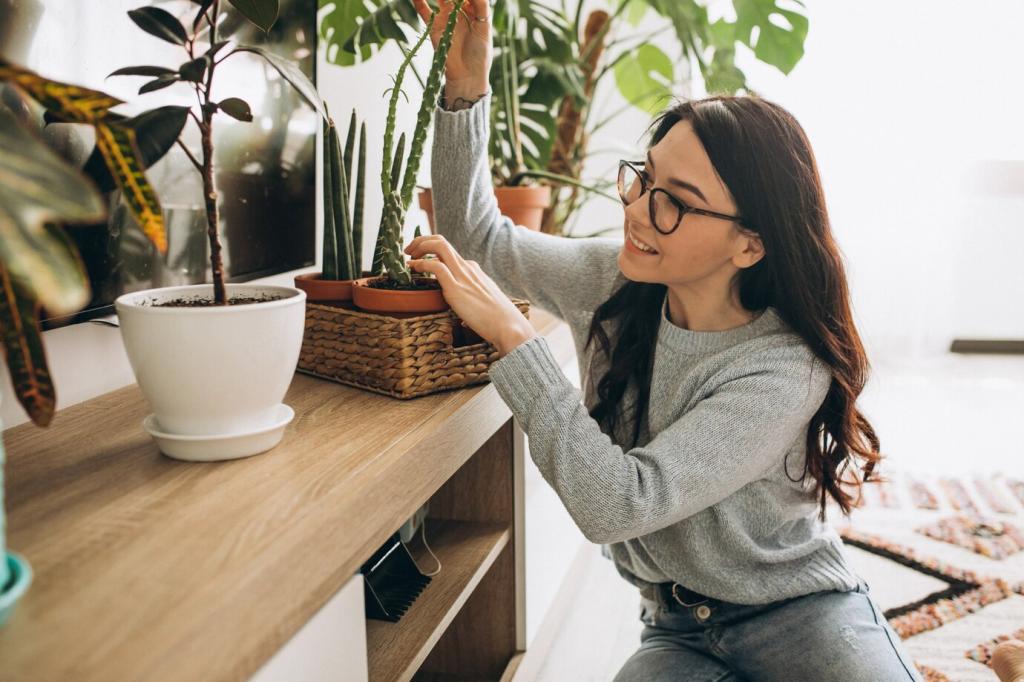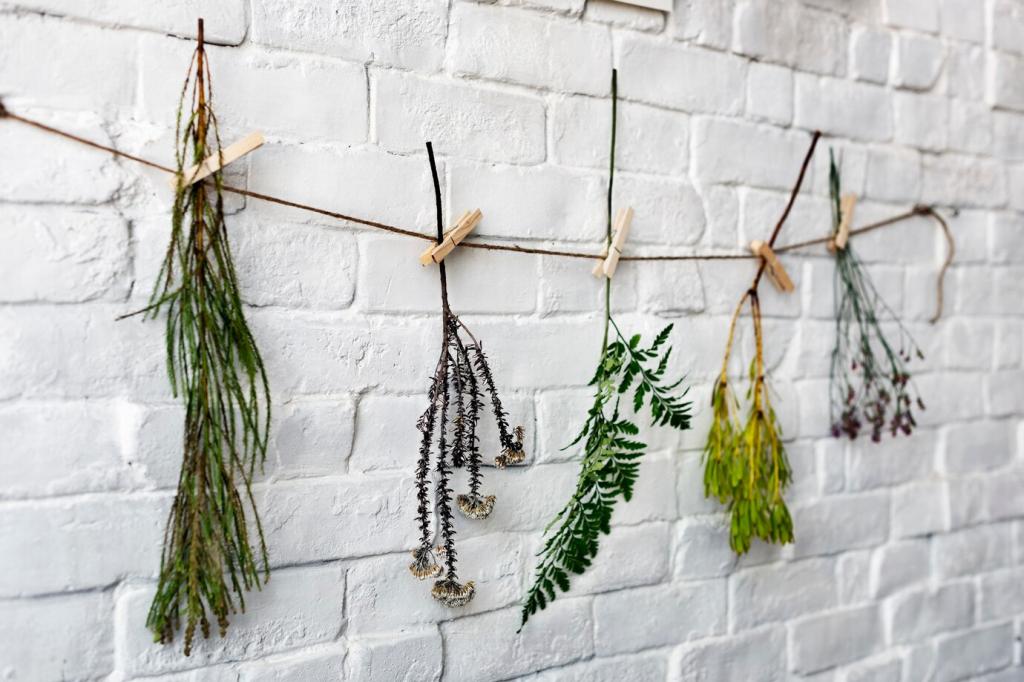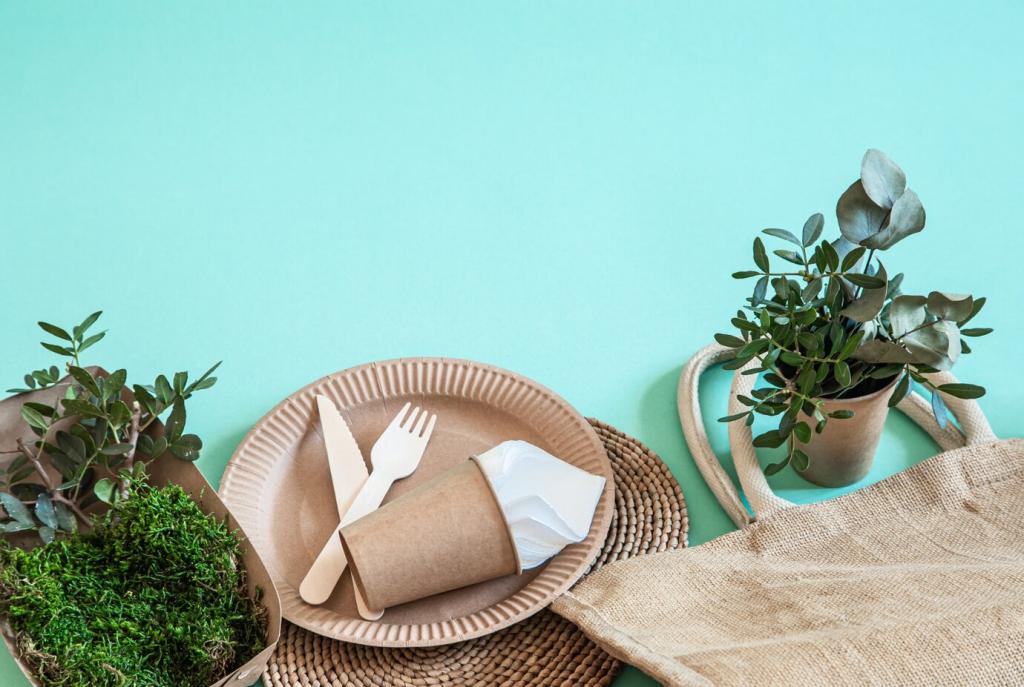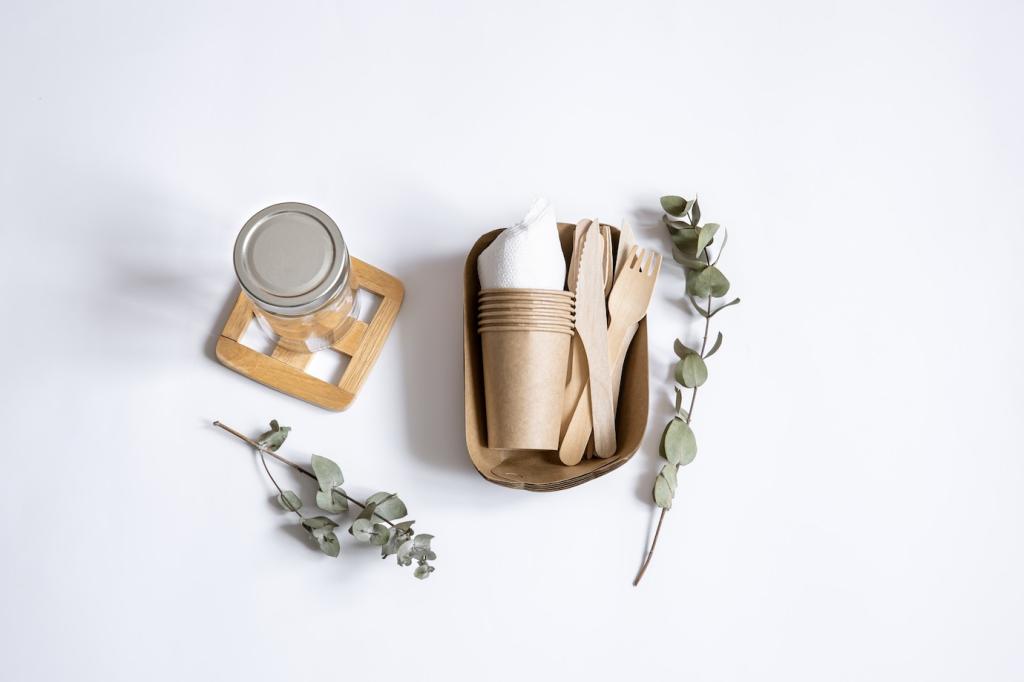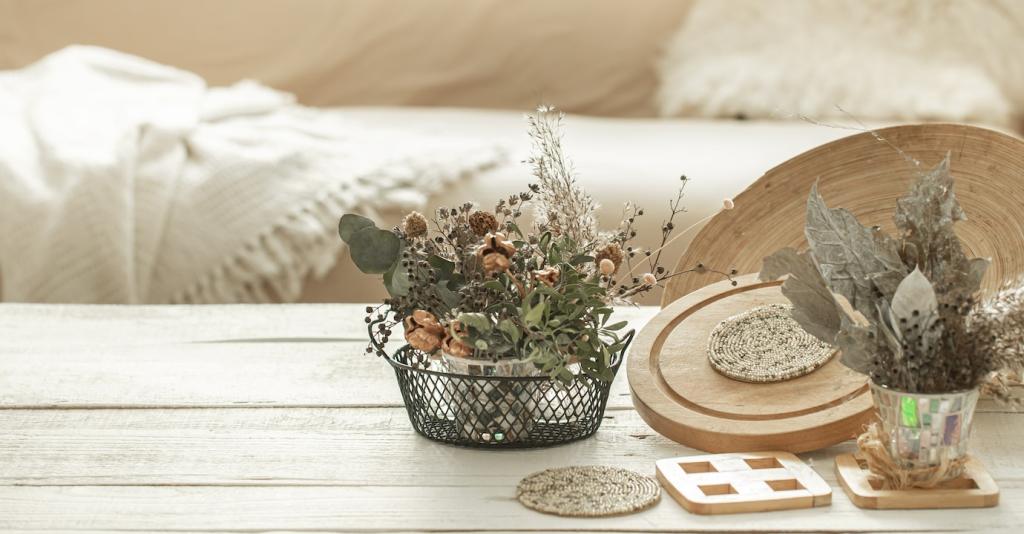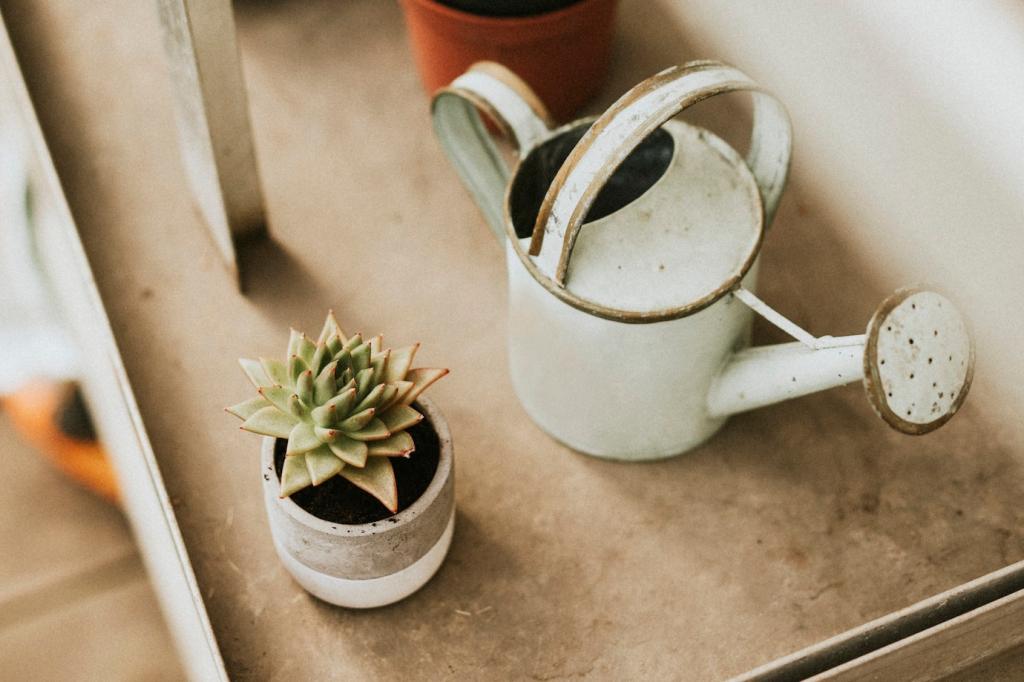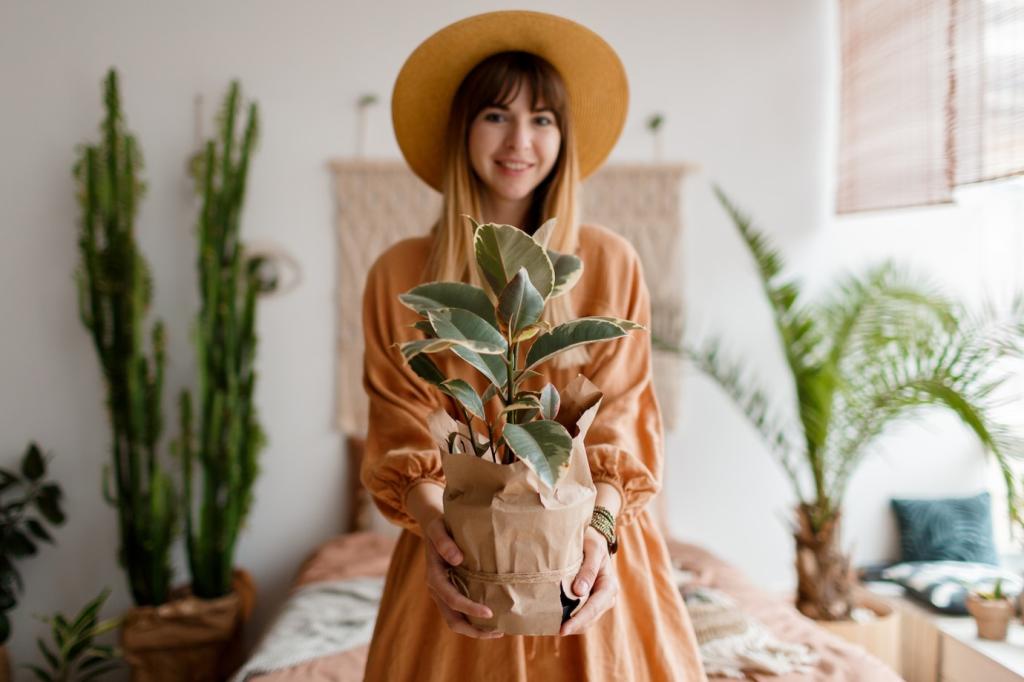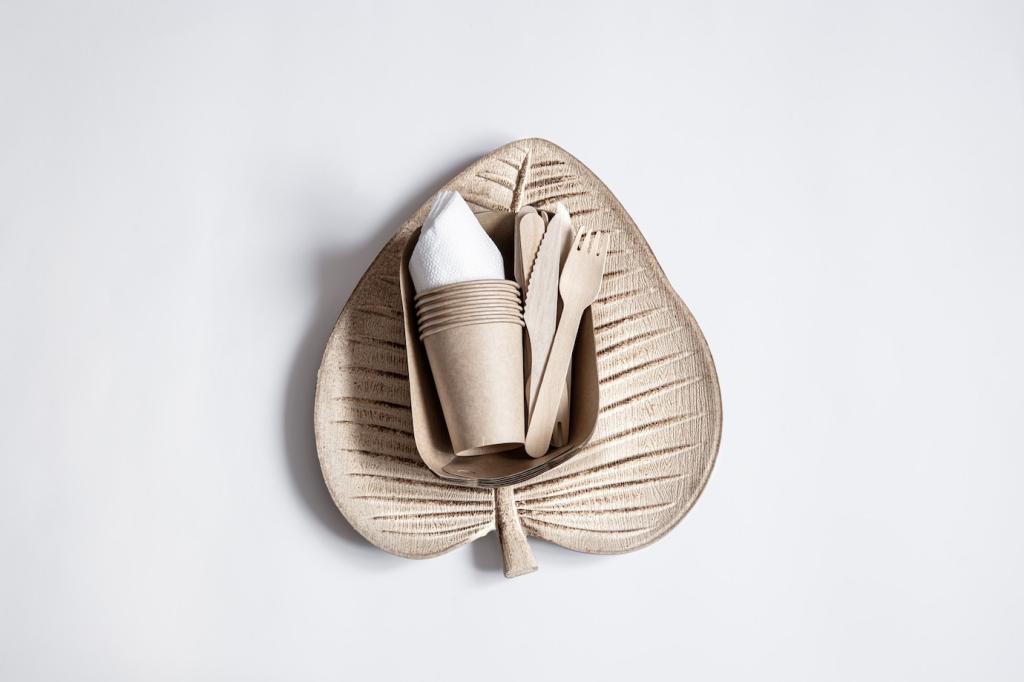Room-by-Room Strategies
Swap paper towels for washable cloths, and store bulk goods in repurposed jars with clear labels. Choose durable cookware and sharpen knives instead of replacing them. Small, consistent habits shrink waste while keeping the kitchen beautiful.
Room-by-Room Strategies
Modular seating, movable side tables, and stackable stools adapt for movie nights or guests. Versatility reduces the need to buy extras. Anchor with a timeless rug and add seasonal texture using throws you already own.

